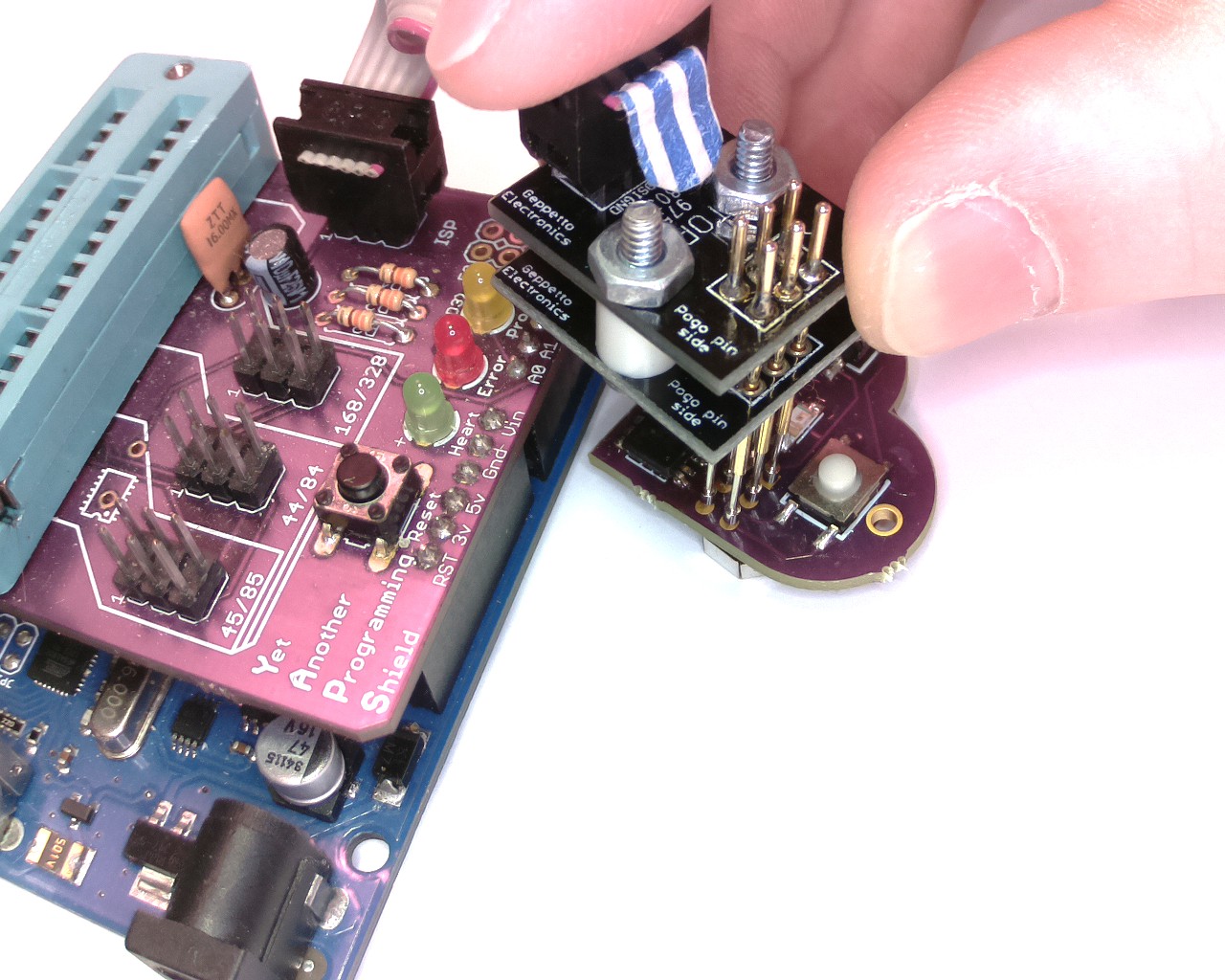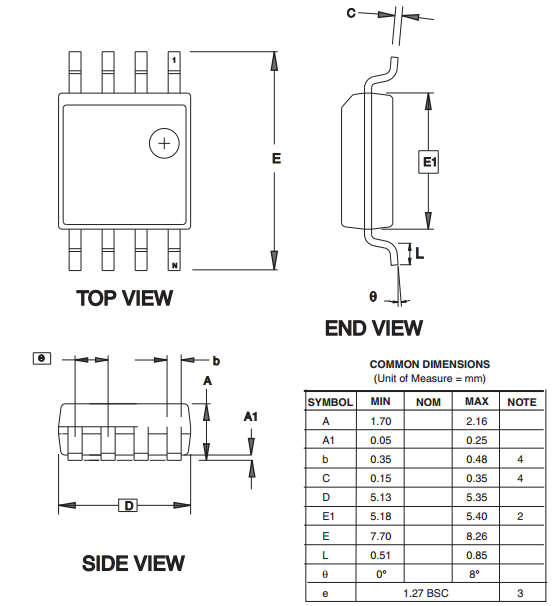A majority of my projects to date have used DIP package Attiny85, 84, and Atmega328. These are usually programmed beforehand using a ISP shield on an Arduino, or afterwards using the ISP header. My first PCB design, was in fact, a shield which could be used to program the variety of AVR chips I was using. Breadboarding up an Arduino-as-ISP circuit time every time I needed one was error-prone and frustrating.

Programming via ISP header using Pogo Pins
My Making has progressed to the point that I have started doing SMT, mainly because I've been doing wearables and like the idea of having a coin cell battery on one side and the microcontroller on the other in a nice tidy package. The SOIC package is hand solderable, and using pads for the ISP header instead of through holes helps maintain the advantage of going SMT. Making a good connection to pads using a 2x3 pin header was a hit-and-miss proposition, so I was happy to find Nick Sayer's ISP Pogo Adapter.

SOIC to DIP adapter installed in a ZIF socket: Turtles all the way down . . ..
It occurred to me that since not all projects have ISP headers, there should be some way to program the chips prior to installation. With a little googling, I found SOIC to DIP adapters which can be used to mate up with a DIP ZIF fixture. A SOIC 20 allows me to program the AVR 8-pin, 14-pin, and 20-pin packages!

EIAJ Flavor SOIC. Datasheets are your friend . . .
The one cavat here is to be aware that there are two types of SOIC package, a wider EIAJ version that AVR supplies, and a narrower JEDEC version (oh, why do they do this to us?). My first ebay adapter purchase was the narrow version, and this problem has bit me with PCB footprints as well. A word to the wise . . .
 MakersBox
MakersBox
Discussions
Become a Hackaday.io Member
Create an account to leave a comment. Already have an account? Log In.
I like to use the programming clip for my attiny chips, especially since it also lets me upgrade the project after the chip is soldered.
Are you sure? yes | no
I just want to throw out the option of Tag Connect programming cables, linked below. They're a bit pricey at ~$34USD but once you've got one, you never have to mess around with .1"-spaced ISP headers again and the footprint is about the size of a 1210 SMD package (they say it's about the size of an 0805 but that's a marketing department being pretty optimistic there).
I'm not trying to nay-say the cool work portrayed above, but just want to let you know of the existence of these. They've got the bonus of allowing ISP so you can tweak code after soldering the part....I don't have any connection/incentive to plug these guys, they've just allowed me to make stuff that I couldn't squeeze into the tight package otherwise. http://www.tag-connect.com/TC2030-IDC-NL
Happy Making!
Are you sure? yes | no
That looks pretty cool. Kind of a "micro-pogo" with alignment holes! I still have trouble getting the alignment right holding my rig in place by hand.
Are you sure? yes | no
Great post! It is nice to be able to avoid adding headers to the board just for programming.
Are you sure? yes | no
OK, so I tried to program an Attiny84 SOIC with my cute "all-in-one" SOIC-DIP adapter today, and it DIDN'T fit! What is up with that?
ATTINY84A-SSUR -> "14-SOIC (0.154", 3.90mm Width)"
ATTINY85V-10SUR -> "8-SOIC (0.209", 5.30mm Width)"
ATMEL,why you make so hard?
Are you sure? yes | no